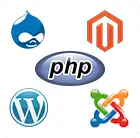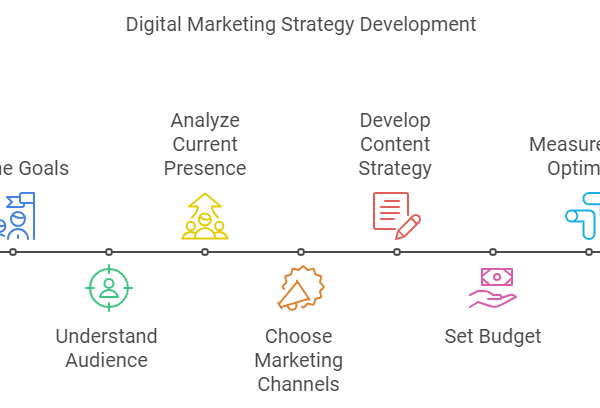What is the overview of PHP?
PHP (Hypertext Preprocessor) is a widely-used server-side scripting language designed for web development. It is particularly well-suited for creating dynamic and interactive web pages. Originally created by Rasmus Lerdorf in 1994, PHP has since evolved into a robust and versatile scripting language with a large and active community of developers. Here is an overview of PHP:
Server-Side Scripting
PHP is primarily used for server-side scripting, meaning it runs on the web server and generates dynamic content before sending it to the client’s web browser. It is embedded within HTML code and can be used in combination with various web servers, such as Apache, Nginx, or Microsoft IIS.
Open Source
PHP is an open-source language, which means that its source code is freely available to the public. This has contributed to its widespread adoption and continuous improvement through community contributions.
Syntax
PHP syntax is similar to C, Java, and Perl, making it relatively easy for developers to learn and use. PHP code is embedded directly into HTML, making it seamless to integrate dynamic server-side functionality with static web content.
Versatility
PHP is a versatile language that supports a variety of applications, including web development, command-line scripting, and even standalone desktop applications. It is often used in conjunction with databases, such as MySQL, to create dynamic websites.
Database Connectivity
PHP has built-in support for various databases, with MySQL being one of the most commonly used. Developers can use PHP to connect to a database, perform queries, and retrieve or manipulate data.
Community and Documentation:
PHP has a large and active community of developers. The PHP community contributes to the language’s development, provides support through forums and online resources, and maintains extensive documentation, making it accessible to both beginners and experienced developers.
Frameworks
Numerous PHP frameworks, such as Laravel, Symfony, and CodeIgniter, have been developed to streamline the process of building web applications. These frameworks provide pre-built modules, MVC (Model-View-Controller) architecture, and other features to enhance development efficiency.
Security Features
PHP includes various security features to help developers build secure applications, such as input validation functions, data encryption, and protection against common web vulnerabilities. However, developers must still adhere to security best practices to ensure the safety of their applications.
Server Compatibility
PHP is compatible with various web servers, including Apache and Nginx, making it easy to deploy PHP applications on different hosting environments.
PHP course in Chandigarh remains one of the most popular server-side scripting languages for web development, powering a significant portion of websites on the internet. Its combination of ease of use, versatility, and a vast ecosystem of tools and frameworks makes it a go-to choice for many developers building dynamic and interactive web applications.
How to make PHP more secure?
Securing PHP applications is crucial to prevent various security vulnerabilities and protect against potential attacks. Here are some best practices and tips to make PHP more secure:
Keep PHP Updated
Regularly update PHP to the latest stable version to ensure you benefit from the latest security patches and improvements.
Secure Your Code
Follow secure coding practices to minimize vulnerabilities. Avoid using deprecated functions and features. Use functions that prevent SQL injection, cross-site scripting (XSS), and other common attack vectors.
Validate User Input:
Always validate and sanitize user input to prevent SQL injection, cross-site scripting, and other injection attacks. Use parameterized statements when working with databases.
Avoid Registering Global Variables:
Disable the use of register_globals in your PHP configuration. This prevents variables from being automatically registered as global, reducing the risk of security issues.
Use Prepared Statements and Parameterized Queries:
When interacting with databases, use prepared statements and parameterized queries to prevent SQL injection attacks.
Secure File Uploads:
If your application allows file uploads, ensure that you validate file types, restrict file sizes, and store files in a secure location. Avoid relying solely on client-side validation.
Implement Session Security:
Use secure session management techniques. Regenerate session IDs after a successful login, store session data securely, and set session cookie parameters with the session_set_cookie_params function.
Cross-Site Scripting (XSS) Protection:
Use output escaping functions (e.g., htmlspecialchars) to protect against XSS attacks. Sanitize and validate user-generated content before displaying it in your application.
echo htmlspecialchars($userInput, ENT_QUOTES, 'UTF-8');
Enable Content Security Policy (CSP)
Implement a Content Security Policy header to mitigate the risk of XSS attacks by restricting the sources of content that can be loaded on your pages.
header("Content-Security-Policy: default-src 'self'");
Secure File and Directory Permissions:
Set appropriate file and directory permissions to restrict unauthorized access. Ensure that files containing sensitive information, such as configuration files, are not accessible to the public.
Use HTTPS
Encrypt data in transit by using HTTPS. Obtain an SSL/TLS certificate and configure your server to use it.
Disable Unused PHP Functions
Disable unnecessary or potentially insecure PHP functions in your php.ini file. For example, you can disable functions like eval and exec if they are not required for your application.
disable_functions = eval, exec
Security Headers
Implement security headers, such as Strict-Transport-Security, X-Content-Type-Options, and X-Frame-Options, to enhance security.
header("Strict-Transport-Security: max-age=31536000; includeSubDomains; preload");
Regular Security Audits:
Conduct regular security audits and vulnerability assessments of your PHP codebase. Perform code reviews and use security scanning tools to identify and address potential issues.
Monitor and Log
Implement logging mechanisms to track and monitor suspicious activities. Regularly review logs to identify potential security threats.
By adopting these security best practices, you can significantly enhance the security of your PHP training in Chandigarh applications and reduce the risk of common vulnerabilities. Additionally, staying informed about security updates and following the latest industry guidelines will help you maintain a robust and secure web application.
Read more article:-Emperiorteh












